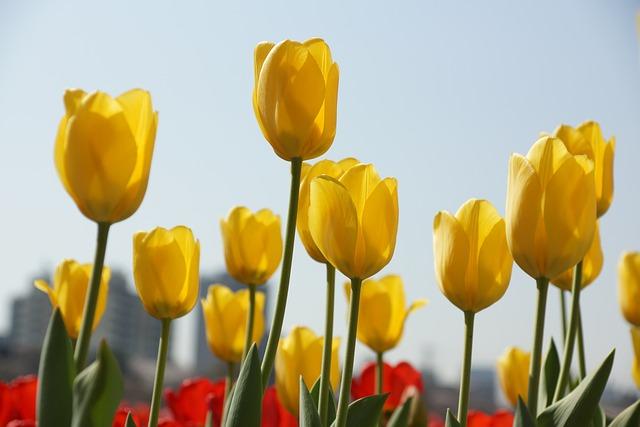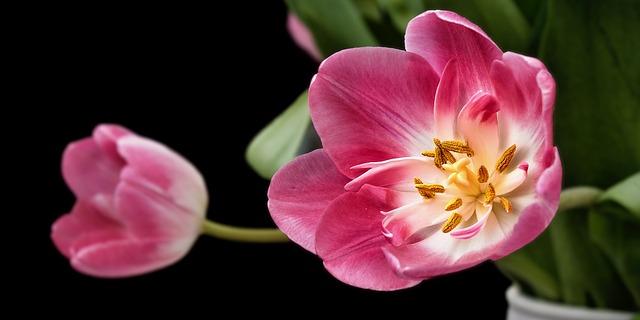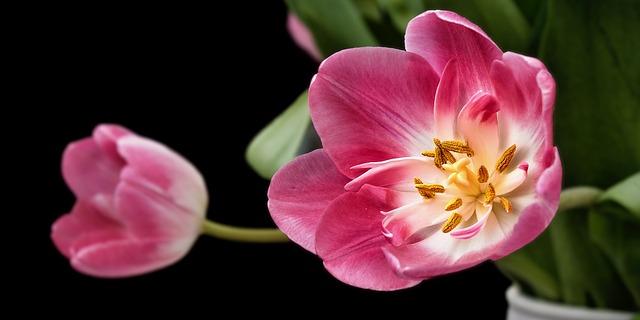- Introduction
- History and Origin of Tulips
- Botanical Aspects of Tulips (Tulipa Genus)
- Popular Varieties of Tulips
- How to Plant, Grow, and Care for Tulips
- Conclusion
- FAQs
- References
Introduction
The tulip (genus Tulipa) is one of the most beloved and recognizable flowers in the world, known for its vibrant colors and unique shape. Native to Central Asia, these enchanting blooms have traveled far to become a staple in many gardens and cultural traditions globally. In this article, we will delve into the history and origin of tulips, their botanical characteristics, popular varieties, and practical care tips, providing a comprehensive guide on this famous flower.
This in-depth guide covers the tulip's origins, different variety types, growth aspects, and care techniques to help you cultivate these stunning bulbs successfully. Additionally, we’ll dive into the fascinating lore and impact that tulips have had on horticulture. Whether you're a novice gardener or an experienced tulip enthusiast, there's something here for everyone!
History and Origin of Tulips

(Image: Pixabay/@Darkmoon_Art)
The history of tulips spans centuries and multiple cultures. Initially, tulips were native to Central Asia, specifically in places like Turkey, where they grew in the wild. These flowers were highly admired for their beauty and quickly became a favorite of many, particularly among Ottoman sultans. Tulips symbolized power and wealth in Turkish culture, heavily influencing art and literature during the Ottoman empire.
During the late 16th century, tulips made their way to Europe, where they created a craze unlike anything before. This period, known as "Tulipmania," saw tulips become so sought after that they were traded at exorbitant prices. The Netherlands became the epicenter of this craze, as wealthy individuals cultivated rare and unique variations of the flower. It wasn’t long before tulips became synonymous with Dutch culture.
Interestingly, the frenzy culminated in a market crash in 1637, marking one of the world’s first economic bubbles. However, even after Tulipmania subsided, the Netherlands remained a key player in the tulip industry, ensuring its place in historical archives. Today, tulips are still closely linked with Dutch tradition, and Holland continues to be one of the main exporters of these flowers globally.
In modern times, tulips are no longer just a luxury item reserved for the wealthy. They adorn the gardens of millions around the world, where they are appreciated for their range of colors and interesting history.
Botanical Aspects of Tulips (Tulipa Genus)

(Image: Pixabay/@jongjoonmoon)
Tulips belong to the genus Tulipa, which is part of the Liliaceae family. There are over 75 species within this genus, and they boast a wide array of hybrids and cultivars. The flowers are recognized primarily for their elegant cup-like shape, but did you know that there are over 3,000 different registered varieties of tulips appearing in various forms?
The flower itself grows from a bulb, and this underground storage unit allows the plant to survive cold climates. Tulips are herbaceous perennials, so once planted properly, they can grow back year after year under the right conditions. Their elongated leaves are often a striking green with faint hints of silver, adding as much visual appeal as the flowers themselves.
The tulip's bloom typically has 6 petal-like tepals (although some varieties may have more). Their spectacular variety of colors ranges from pure whites to deep purples to chic blends of multicolors. Some tulips are even known to have unique "feathered" petals or irregular blotches caused by virus infections, which ironically made them more valuable during Tulipmania.
Beyond their eye-catching look, tulips are important in botany for their stoloniferous roots, which help them spread out across the garden over time, although most maintain a stationary growth pattern unless deliberately propagated.
Popular Varieties of Tulips

(Image: Pixabay/@SplitShire)
No discussion of tulips would be complete without mentioning the immense variety that exists within this genus. Starting with the common single-flowered tulips, these classic blooms remain the go-to for spring gardens due to their simplicity and elegance.
But beyond the traditional tulip lies an entire realm of possibilities. Many gardening enthusiasts gravitate to parrot tulips, known for their dramatic ruffled petals. Their bold colors combined with intricate petal designs create quite the sensational display. Darwin Hybrid Tulips are another popular choice, celebrated for their taller stems and large, bold flowers, making them hearty options for windy regions.
Another exciting variant is the Triumph Tulip, which has sturdy stems and cup-shaped blooms. These are particularly useful in colder climates since they’re one of the hardiest types of tulips. By contrast, Double Early Tulips feature many layers of petals, giving them a fuller, peony-style appearance—ideal for gardeners who want depth in their flowerbeds.
Lily-flowered tulips and Fringed Tulips are also show-stoppers worth mentioning for their exotic shapes. While these options may not be grown as commonly, they serve as an example of the endless variety found within the Tulipa genus.
How to Plant, Grow, and Care for Tulips

(Image: Pixabay/@realworkhard)
If you're eager to cultivate your own tulips, you’ll need some basic understanding of ideal growing conditions. Tulips thrive best when planted in the fall (before the first frost but after temperatures have cooled), allowing the bulbs to establish themselves well before springtime blooming. Make sure to pick a location with good drainage so that water doesn’t pool up, causing root rot.
Start by digging a hole about 6–8 inches deep, placing the bulb with the pointed side up. Spacing is critical; leave about 4–6 inches between each bulb to provide enough breathing room. Once planted, cover with soil and water thoroughly to help the roots settle into place.
In terms of maintenance, tulips aren't high-maintenance plants—just make sure to keep them watered, but don’t overwater. Fertilizing once at the time of planting should give the bulbs a healthy start. Since tulips naturally come from dry, arid regions, they prefer minimal moisture—only water them when the soil around them dries up.
Over time, you’ll notice that tulip blooms last only a few weeks, generally from March until May, depending on the local climate zone. To extend their lifespan, consider deadheading the flowers once they fade. This ensures that the plant focuses on storing energy back into the bulb rather than seed production, promoting healthier future blooms.
Conclusion
Tulips are some of the most exquisite flowers in the world, with a captivating history that intertwines with culture, economy, and horticulture. From their modest beginnings in Central Asia to their luxurious gardens in Europe, it’s clear why tulips occupy a special place in both hearts and flower beds all over the globe. Whether you’re drawn to their vibrant colors, historical significance, or low-maintenance care, tulips are a fantastic addition to any garden seeking elegance and charm.
FAQs
When should I plant my tulips?
Tulips should be planted in the fall, preferably after the temperature started to cool down but well before the ground freezes.
How often should I water tulips?
Once the bulbs are planted, they need watering right away. After that, water sparingly as tulips prefer dry conditions.
Can tulips regrow after being cut?
No, once tulip flowers are cut, they don’t regrow from the stem, but if their bulbs remain healthy, they bloom again the following year.
How long do tulips bloom in the spring?
Tulips typically bloom for about 1-2 weeks in spring, though this can depend on regional climate conditions.

